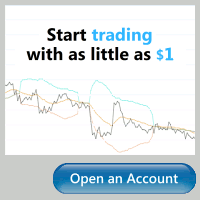Basic Introduction to the Forex - Part 4
| When you buy or sell an instrument, you are placing an order. Different brokers have different orders, but here are the basic orders Market order A market order is an order to buy or sell at the current market price. You use this type of order when you want to buy the instrument at its current price Eg : Currently, USD/EUR - 1.7522 1.7526. IF you want to buy at the current price of 1.7526, you place a Market Order Limit order A limit order is an order placed to buy or sell at a certain price. Now suppose you do not want to buy the USD/EUR at a price of 1.7526, instead prefering to wait for it to touch 1.7536 before buying it (not really a good idea,but just for example sake). You can set an limit order, and your platform will automatically buy when the price touches 1.7536 Stop-loss order A stop-loss order is a limit order linked to an open trade for the purpose of preventing additional losses if price goes against you. It just helps minimize your loss if by any chance the market goes against you. Supposing you buy USD/EUR at 1.7526 expecting the price to rocket, but on the contrary the price drops to 1.7501. If you have a Stop-loss order in place at 1.7517, you will lose only 9 pips wheras if you did not you would lose 25 pips. Other Types Of Orders Other popular, but a bit more complicated orders. GTC (Good till cancelled Order) A GTC order remains active in the market until you decide to cancel it. The order remains in effect and your broker will not cancel it GFD (Good for the day order) A GFD order remains active in the market until the end of the trading day. The end of the market day is usually considered as 5pm EST but may vary from broker to broker OCO (Order cancels other)An OCO order is a mixture of two limit and/or stop-loss orders. Two orders with price and duration variables are placed above and below the current price. When one of the orders is executed the other order is canceled. Example: The price of USD/EUR is 1.7526. You want to either buy if the price touches 1.7536 expecting it to rise further or if it falls, initiate a selling position at 1.7505. Simply, if one order is accepted, the other is cancelled. Continue to Basic Introduction to the Forex - Part 5 (Selecting A Broker) Go Back to The Forex |




Comments on "Basic Introduction to the Forex - Part 4"
post a comment